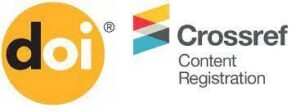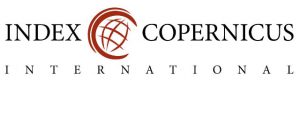
How to Critique a Journal Article
Most scholars and practitioners are passionate about learning how to critique a journal article. Journal article critique is a formal evaluation of a journal article or any type of literary or scientific content. As a careful, complete examination of a study, journal article critique judges the strengths, weaknesses, logical links, meanings and significance of the content presented in an article. The core aim of performing a journal article critique is to show whether or not the arguments and facts that the author provided are reasonable to support their main points. A writer of a journal article critique is expected to identify a scientific article and subject it to a critical discussion based on their point of view, but following a set of conventional guidelines.
Features of a Good Article Critique
When doing a journal article, you are expected to do the following for each section of a research article:
- Explain what was done right with evidence from the journal article being critiqued.
- Explain what was not done right, possible reasons, and what ought to have been done.
- Explain what you think could have been done or what you could do to make it better.
- Given a brief recommendation for future researchers.
What this means is that you must first of all know exactly the nature of structure and content that you expect from a journal article. Without this knowledge, it will be difficult to critique a journal article and write a quality piece of writing from it. Having done these, your journal article critique will reflect the following characteristics.
i). It should have a unique opinion discussion
Article critique does not represent a simple summary of an article. Most students make a mistake of writing a mere summary of the research article after they read it. It is worth noting that journal articles already have summaries and that is not what readers actually want, but a unique opinion and discussion is what counts as a quality journal article critique.
ii). Evidence
As a writer, you are not expected to provide just your impressions of the article, but also evidence that sets expressions as well. Of course you are not asked to write a new content, but as you write your viewpoint of it, it is critical to support them with evidence.
iii). Identification of the Main Idea
Ensure that you identify the main idea of the article. Each journal article is published to transmit a specific idea that gives it a purpose. Furthermore, remember to clarify the background and significance.
iv). Dual Direction
Do not focus only on the issues that a given article has raised, but also give attention to the important issues that it has left out. There could some content or explanations that you could expect a journal article to present, but that was left out. Explain it and tell the difference it could have caused.
Areas of Journal Article Critique
Article critique fundamentally focuses on evaluating all the sections of a an article to determine its consistency with the scientific research and writing standards. Thus, each section of an article is subjected to critique as follows:
Introduction
- Check the extent to which the title of the article interest and allow you to have an immediate idea of the content of the research.
- Identify the authors of the research article and/or parties that conducted the research is published.
- Identify and apprise the journal in which the article the article is published.
- Evaluate the introduction in terms of how it describes the purpose and background of the study.
- Explain if the research question is consistent with the purpose of the study.
- Recognize the potential effect of the research article to your current practice.
Literature Review
- Find out if the sources of literature review in the article are current (i.e published within the last 5-10 years).
- Evaluate the theories used in relation to relevance to the independent and dependent variables. Ask yourself if the theories explain the phenomenon under investigation.
- Check whether if the literature reviewed is relevant to the research (some content of the literature may be pulled randomly and may not reflect the variables of the study.
Methodology
- Identify and explain the research design that enabled the creation of a journal article being critiqued.
- Check the research method that was adopted and evaluate its appropriateness to the research question and context. For example, questionnaires may not be appropriate among illiterate populations.
- Evaluate the method of sampling and explain if it is appropriate to the topic and population characteristics.
- Check the possibility of biases in the sample. If biased, explain the reason and what could be done to prevent biases from occurring.
- Appraise the size of the sample in relation to the population and desired significance levels.
- Identify and critique the tools that were used to collect data, procedures through which data was collected, and their validity, reliability and accuracy.
- Find out if the researchers got ethical approval to conduct the study and if not, why.
- Overall, explain if the methods of research have been explained adequately.
Results and Findings
- Check how data was analyzed.
- Briefly explain the main findings of the research.
- Evaluate the way in which results are displayed (Is it done in a clear and understandable manner?)
- Check if the authors have discussed the results in relation to the original problem they identified in the introduction section.
- Find out if the findings have been related to the literature review and consistencies/inconsistencies identified and explained. (Have the authors cited only the pertinent literature?)
Conclusion
- Check if the conclusion captures all aspects of the study from introduction to the end.
- Analyze the nature of conclusions presented and if they answer the research question.
- Analyze and explain the main strengths and weaknesses of the study.
- Identify what you think is the main limitations of the study and if they were identified by the authors.
- Check if the author(s) provided suggestions for future research.
References
- Go through the references and check if they consistently adhere to a given referencing style.
From the above discussion, it is evident that journal article critique is an involving activity that require active reading, developing an outline, questioning authors’ main points, identifying contradictions, writing down the content of the critique, and revising it to make it perfect. You can now practice by downloading a few articles and trying to critique them. This will give you a good opportunity to learn from experience and perfect your article critique skills.


10 Comments